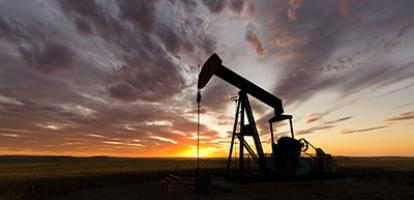By Robin Boadway and Benjamin Dachis
Alberta’s much-anticipated royalty review panel has begun drilling down with expert and public consultations. It can find common ground by proposing that the province adopt a best-in-class cash-flow tax for all energy resources in the province.
The status quo needs changing. The province holds auctions in which companies purchase the rights to extract provincially owned oilsands, natural gas or conventional oil. Companies that buy conventional oil or natural gas deposits then pay the government a tax based on the amount they produce. These taxes are called gross-revenue royalties, because companies pay the province a share of their gross production revenues.
The royalty rate applies well by well. Conventional oil and natural gas royalties have had the same broad design for decades.
The oilsands tax is different. It is a cash-flow tax because it is levied on a company’s cash flows, not gross production. Cash flows are a company’s revenues minus all expenditures. The oilsands tax regime is a more recent design from the late 1990s.
Much of the discussion in the past has been about the royalty rate. After a 2007 rate hike, rates fell back for conventional oil and natural gas after another 2010 review. But the key difference between the oilsands cash-flow tax and the gross-revenue royalty is the design. These differences in tax design are what the panel and those going to the consultations should focus on.
The first key to tax design is to account for the cost of production. The gross-revenue royalty for conventional oil and natural gas does this in a clumsy way. The gross-revenue royalty rates vary by well production, depth and the price of the product. However, the cumulative cost of production that companies face involves many factors not accounted for in the royalty formulas.
In contrast, the top oilsands tax only bites after companies have covered their cumulative costs. Those costs include, for example, their cost of capital and wages for employees. That means companies pay royalties only on profits over-and-above those they need to be competitive. The result is that the oilsands tax puts up few barriers for companies to invest.
But the panel could still find ways to improve the oilsands tax. For example, companies are only able to deduct their expenses from later oilsands taxes if their site ends up being profitable and pays royalties. Exploring for new deposits is a risky and expensive business. Companies know they might be left with expenses they can’t deduct from their taxes. That discourages companies from seeking out new developments.
A better idea would be to follow Australia’s cash-flow tax. Companies there can take the expenses they incur for an unsuccessful project and use them to reduce their taxes due at a successful project. Norway’s system is better yet. Companies there can claim expenses under all circumstances.
The oilsands tax needs only tweaking. But the gross-revenue royalties for conventional oil and natural gas is in need of an overhaul. Gross-revenue royalties lead companies to shut down wells earlier than otherwise if their dwindling production cannot cover the cost of gross-revenue royalties. That means less investment by companies and less royalty money for the government. Higher gross-revenue royalty rates would result in companies fleeing the province. That was what happened after the 2007 rate hike.
It’s time that Alberta applied a cash-flow tax to conventional oil and natural gas production. The panel need not look far for a model. British Columbia once had a similar program that Alberta can learn from.
With a well-designed resource tax regime that applies only to a company’s above-normal profits, the province can levy a higher tax rate. That is how the province can collect revenue without harming the incentive to invest.
There will be many details that the panel will need to work through in recommending royalty changes. But it can find common ground among all parties by recommending that a cash-flow tax be the province’s resource tax of the future.
Robin Boadway and Benjamin Dachis are the authors of the C.D. Howe Institute study Drilling Down on Royalties: How Canadian Provinces Can Improve Non-Renewable Resource Taxes.
Published in the Calgary Herald on October 7, 2015





